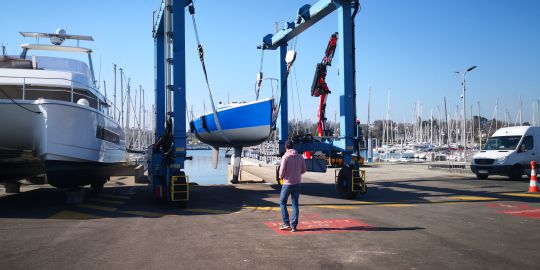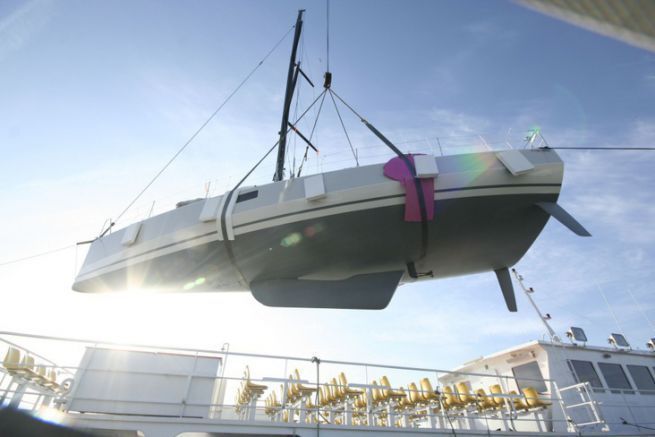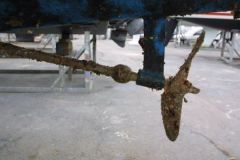Launching the boat
Now that the paint fittings are dry, we can finally launch. Remember to attach your fenders and hawsers (over 10 m) on the mooring cleats.
If your boat is under the crane hook, they will be used to control your boat during its flight. If it is windy, you will have to hold them firmly while following the crane operator's instructions to keep your boat in place.
Generally, to find its position above the water, the boat rotates in the air.

If it is a travel lift, the driver will bring the boat over the pit. With this machine, you will not need to find kind souls to control the boat during handling.

Finally, the crane operator will lower the boat. The keel will be the first to touch the water, then the hull. Once the hull is immersed, the tension in the straps will decrease.

Controlling the smooth running of operations
Finally, your boat is in the water! It is now time to proceed with the checks.
The very first inspection is done inside. Since the boat is still under the crane, you can calmly inspect the seals: stuffing boxes, valves, sounding hulls, engine hold.

If there is nothing to report inside, proceed to the engine test. Start it and check that it spits out the cooling water.
If these checks do not reveal any faults, detach the straps from the hook. Remove one side only and let the straps fall into the water. This will allow the crane operator to reassemble the straps along with the hook. Check your rigging and reinstall the backstay in its place.











